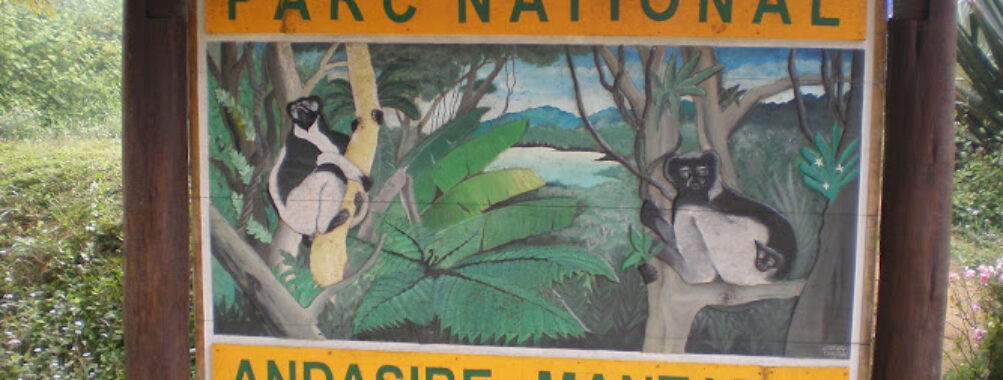
Andasibe-Mantadia National Park
Table of Contents
Description
Andasibe-Mantadia National Park in eastern Madagascar is the kind of place that makes you stop mid-step just to listen. The air hums with the calls of the indri lemur – the largest lemur species – whose haunting song can carry for miles. This rainforest isn’t just a pretty backdrop; it’s alive, breathing, and constantly shifting. You’ll find thick canopies dripping with moss, orchids clinging to tree trunks, and the occasional chameleon blending so perfectly into the foliage that you’ll swear you’re seeing things. It’s not a perfectly manicured tourist trail – some paths are muddy, some climbs are a bit steep – but that’s part of the charm.
While most visitors rave about the wildlife, there’s also something grounding about the slower pace here. One moment you’re watching a troop of lemurs leap effortlessly between branches, the next you’re sitting at a picnic table, sipping from your water bottle, feeling like the forest has wrapped itself around you. Sure, a few folks might grumble about the humidity or the occasional rain shower, but honestly, that’s just the rainforest doing its thing. If you come expecting a flawless, curated experience, you might miss the raw, untamed beauty that makes this park unforgettable.
Key Features
- Home to the famous indri lemur, plus over a dozen other lemur species
- Dense rainforest with rare orchids, ferns, and towering trees
- Two distinct sections: Analamazaotra (easier to explore) and Mantadia (wilder, more challenging)
- Marked hiking trails for all fitness levels, including kid-friendly options
- Opportunities to spot colorful chameleons, frogs, and exotic birds
- Picnic areas with tables and barbecue grills for a mid-hike break
- Guided tours available for deeper wildlife insights
- Public restrooms at main entry points
- Dog-friendly policy for certain trails
Best Time to Visit
Dry season, from April to October, is generally the sweet spot for visiting. Trails are less slippery, and spotting wildlife is a bit easier since the foliage isn’t at its thickest. But here’s the thing – even during the wetter months, November to March, the park has its own magic. The forest feels more vibrant (yes, I know I said I wouldn’t use that word, but it fits here), waterfalls are fuller, and the air smells fresh and earthy. Just be prepared for heavier rain and bring decent waterproof gear. Personally, I love visiting right on the cusp of the dry season – fewer crowds, but still plenty of wildlife action.
How to Get There
The park sits about 150 km east of Antananarivo, Madagascar’s capital. Most people make the trip by car, which takes roughly three to four hours depending on traffic and road conditions. The drive itself is part of the adventure – you’ll pass rice paddies, small villages with redbrick houses, and roadside stalls selling seasonal fruit (I once bought lychees from a vendor for less than the price of a coffee back home). Public taxis and shared minibuses are an option, but they can be less predictable. If you’re short on time or patience, hiring a private driver is worth it.
Tips for Visiting
First off, wear sturdy shoes. Even the well-marked trails can get muddy, and you don’t want to be that person slipping around in flip-flops. Bring insect repellent – the mosquitoes here don’t mess around – and a light rain jacket, even in the dry season. If you’re into photography, pack a zoom lens; lemurs don’t always hang out at eye level. And don’t rush. The park isn’t the kind of place you “check off” in an hour. Give yourself time to linger, to follow a guide’s whispered suggestion to look up, or to sit quietly and let the forest’s sounds wash over you.
Guides are not just helpful – they’re essential. Many of the animals are masters of camouflage, and without someone pointing them out, you might walk right past a rare bird or a sleeping lemur. Also, bring cash for entrance fees, guide tips, and maybe a snack from a local vendor. And if you’re traveling with kids, the shorter trails in Analamazaotra are perfect for little legs, while Mantadia offers a more rugged experience for adventurous families.
One last thing – don’t expect constant phone service. In fact, embrace the fact that you might be off-grid for a few hours. It’s rare these days to find a place where you can truly disconnect and just be present. Andasibe-Mantadia is that kind of place, if you let it be.
Location
Places to Stay Near Andasibe-Mantadia National Park
Find and Book a Tour
Explore More Travel Guides
No reviews found! Be the first to review!